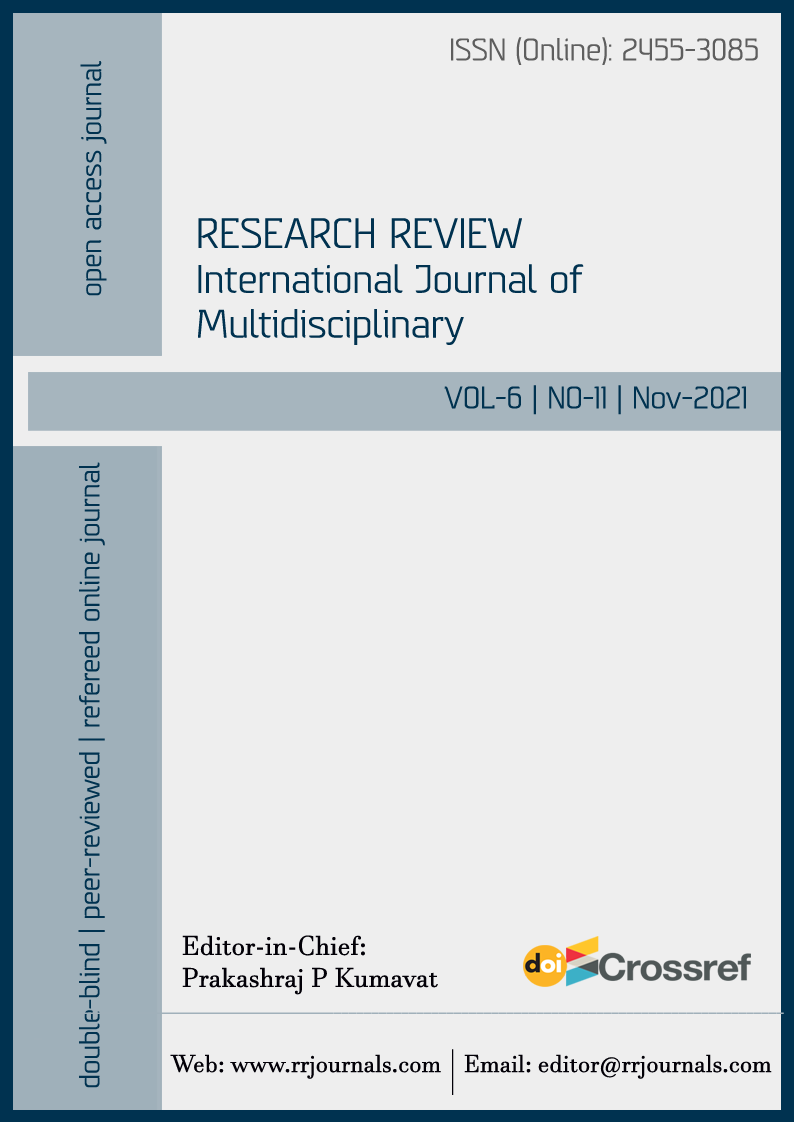Influence of Indian Farmar movement on Nagarjuna's novels
नागार्जुन के उपन्यासों पर भारतीय किसान आंदोलन का प्रभाव
DOI:
https://doi.org/10.31305/rrijm.2021.v06.i11.015Keywords:
Nagarjuna, literature, socialist, movements, agriculturalAbstract
This research paper delves into the profound influence of Nagarjuna, a prominent Indian writer, and his literary works. Nagarjuna drew inspiration from the challenges faced by the vast rural population of India, primarily comprised of farmers and laborers. Rooted in the lower middle class, Nagarjuna identified with the proletariat ideology and stressed the importance of literature in serving the working class. His approach to literature was characterized by socialist realism, offering a genuine portrayal of the struggles of Indian farmers and laborers. Notable movements such as the Indigo Rebellion and the Santhal Rebellion exemplify this shift towards armed struggles. Furthermore, the study examines the emergence of political consciousness among farmers in the early 20th century, resulting in organized movements, notably in Punjab, Malabar, and the United Provinces. The Tebhaga movement in Bengal and the Telangana movement played pivotal roles in addressing issues of land reform and liberation from feudal exploitation. Despite these historical movements and post-independence attempts at agricultural reform, the economic independence of farmers in India remains a pressing concern. The research underscores the ongoing activism within the agricultural sector and highlights the enduring struggle for economic autonomy among Indian farmers.
Abstract in Hindi Language:
यह शोध पत्र एक प्रमुख भारतीय लेखक नागार्जुन और उनके साहित्यिक कार्यों के गहन प्रभाव पर प्रकाश डालता है। नागार्जुन ने भारत की विशाल ग्रामीण आबादी, जिसमें मुख्य रूप से किसान और मजदूर शामिल हैं, के सामने आने वाली चुनौतियों से प्रेरणा ली। निम्न मध्यम वर्ग में निहित, नागार्जुन ने सर्वहारा विचारधारा से पहचान की और श्रमिक वर्ग की सेवा में साहित्य के महत्व पर जोर दिया। साहित्य के प्रति उनके दृष्टिकोण की विशेषता समाजवादी यथार्थवाद थी, जो भारतीय किसानों और मजदूरों के संघर्षों का वास्तविक चित्रण प्रस्तुत करता था। इंडिगो विद्रोह और संथाल विद्रोह जैसे उल्लेखनीय आंदोलन सशस्त्र संघर्षों की ओर इस बदलाव का उदाहरण देते हैं। इसके अलावा, अध्ययन 20वीं सदी की शुरुआत में किसानों के बीच राजनीतिक चेतना के उद्भव की जांच करता है, जिसके परिणामस्वरूप संगठित आंदोलन हुए, विशेष रूप से पंजाब, मालाबार और संयुक्त प्रांत में। बंगाल में तेभागा आंदोलन और तेलंगाना आंदोलन ने भूमि सुधार और सामंती शोषण से मुक्ति के मुद्दों को संबोधित करने में महत्वपूर्ण भूमिका निभाई। इन ऐतिहासिक आंदोलनों और स्वतंत्रता के बाद कृषि सुधार के प्रयासों के बावजूद, भारत में किसानों की आर्थिक स्वतंत्रता एक गंभीर चिंता बनी हुई है। यह शोध कृषि क्षेत्र के भीतर चल रही सक्रियता को रेखांकित करता है और भारतीय किसानों के बीच आर्थिक स्वायत्तता के लिए स्थायी संघर्ष पर प्रकाश डालता है।
Keywords: नागार्जुन, साहित्य, समाजवादी, आंदोलन, कृषि
References
सम्पर्क : सं० सुरेशचन्द्र त्यागी, पृ० 43
कला, साहित्य और संस्कृति, पृ० 51
अयोध्या सिंह : भारत का मुक्ति संग्राम, पृ० 69
क्रिस्टिन सिगिस्ट: भारत में किसान संघर्ष, पृ० 14
महावीर प्रसाद द्विवेदी और हिन्दी नवजागरण, पृ० 9.(भूमिका)
रजनी पाम दत्त: भारत में किसान संघर्ष, पृ० 19
रजनी पाम दत्त : भारत : वर्तमान और भावी, पृ० 91
ए० आर० देसाई:भारतीय राष्ट्रवाद की सामाजिक पृष्ठभूमि, पृ० 48
ए० आर० देसाई: भारतीय राष्ट्रवाद की अधुनातन प्रवृत्तियाँ, पृ० 99
रजनी पाम दत्त: भारत : वर्तमान और भावी, पृ०
ई० मदोवोई: भारती की अर्थव्यवस्था, पृ० 145
रतिनाथ की चाची, पृ० 527
ए० आर० देसाई: भारतीय राष्ट्रवाद की सामाजिक पृष्ठभूमि, पृ० 301
Downloads
Published
How to Cite
Issue
Section
License

This work is licensed under a Creative Commons Attribution-NonCommercial 4.0 International License.
This is an open access article under the CC BY-NC-ND license Creative Commons Attribution-Noncommercial 4.0 International (CC BY-NC 4.0).



